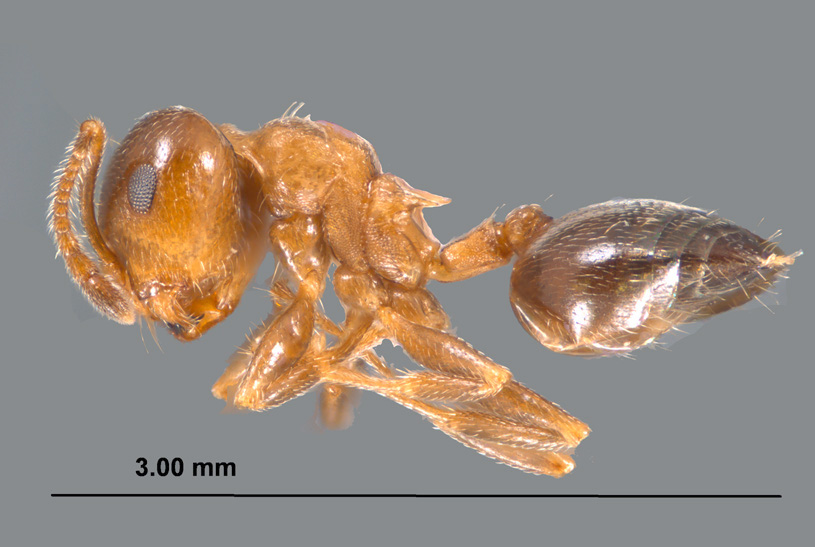Introduction
Ants in the genus Crematogaster are often referred to as acrobat ants because of their propensity to arc the gaster upward and over the alitrunk in a manner that resembles a contortionist or acrobat. They are small, monomorphic ants. Workers have an 11-segmented antenna, the presence of variably long propodeal spines, a flattened petiole, and a somewhat heart-shaped gaster. The postpetiole is attached to the dorsal surface of the gaster, and this characteristic will differentiate this genus from other genera in our area.
Identification
This species ranges in color from light brown to almost black, with short propodeal spines having the inner margins parallel to the longitudinal body axis (in dorsal view). The pronotal pleurae is mostly unsculpured with a large band smooth, reflective, or shiny. The pronotum has only a few erect hairs confined to the humeral shoulders.
Biology and Economic Importance
Crematogaster ashmeadi is a very common species in both AL and MS and nests in many different trees, shrubs, and vines in a wide variety of habitats. Smith (1965) reported that C. ashmeadi damaged insulated board and hard fiberboard, and removed rubber insulation from telephone wires causing short circuits. In Mississippi, workers of this species short circuited an air conditioner contactor relay (see photo above).
Literature Cited
Smith, M. R. 1965. House-infesting ants of the Eastern United States, their recognition, biology, and economic importance. United States Department of Agriculture, Technical Bulletin No. 1326: i-105.
Links
AntWeb Images
Discover Life Images |





